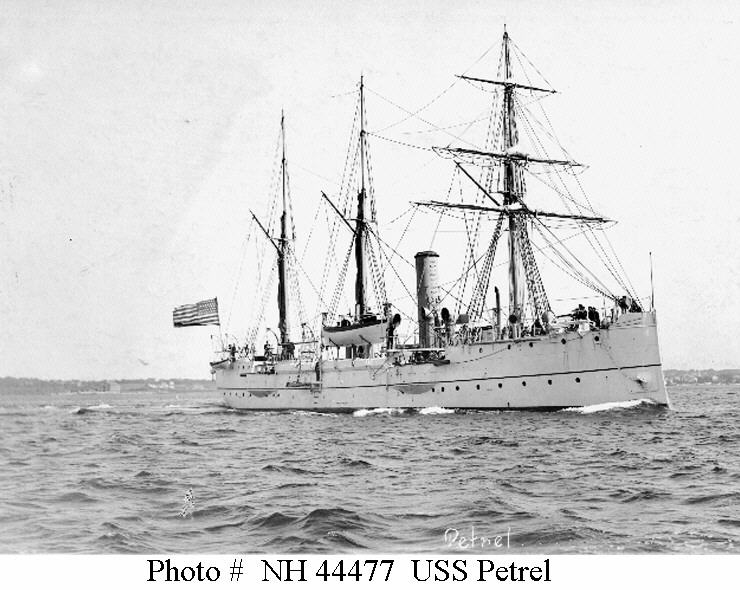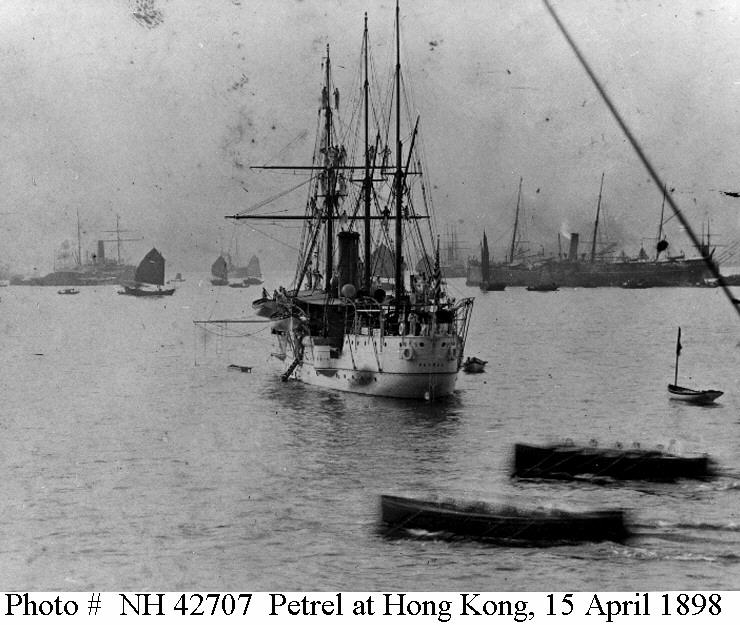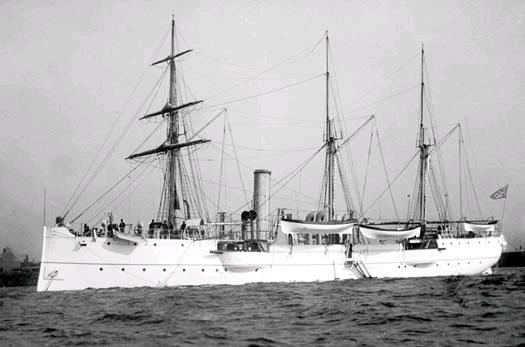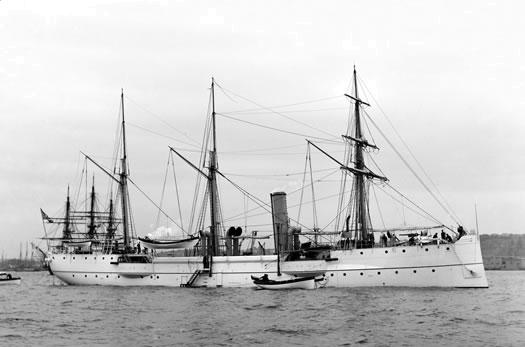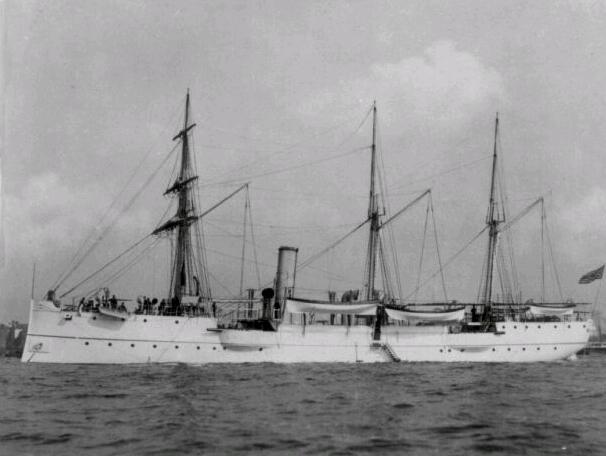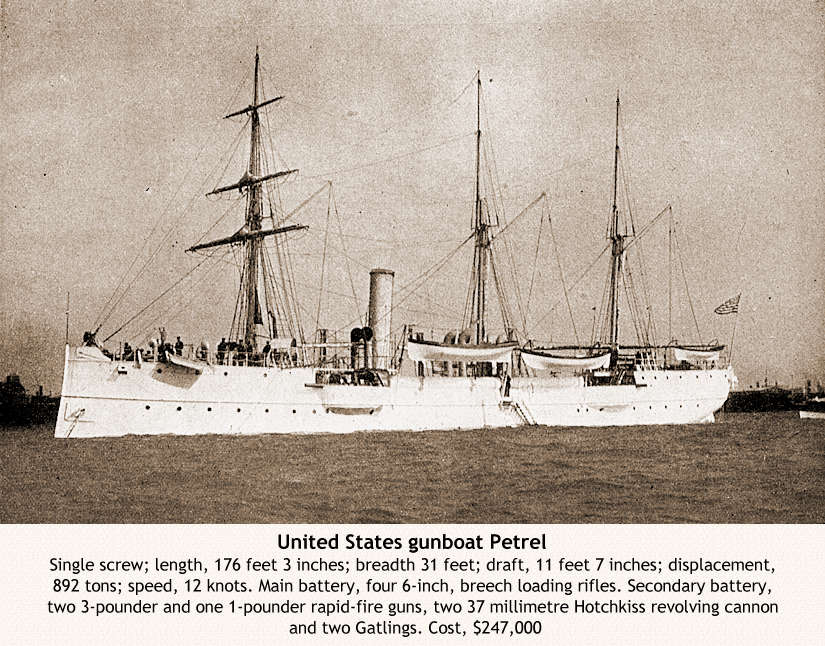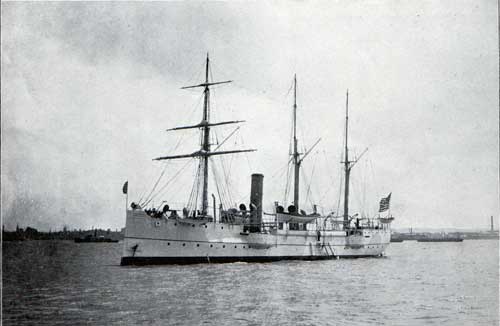two shots from USS Petrel February 11, 1899 On the 11th of February, at about 9 o'clock A. M., the attack was commenced by two shots from the U. S. S. Petrel, which was shortly followed by a general cannonading from the Petrel and Boston, the war vessels constituting the American fleet in the harbor, acting in conjunction with the military force under command of Gen. Miller. Shortly after the beginning of the cannonading clouds of smoke and flame sprung up in different parts of the city. These fires were almost of simultaneous occurrence. One officer of the navy in his testimony states that he witnessed the conflagration of Valpariso; that the appearance of the fires was similar. That they were kindled by the insurgents within the city, and not by the bursting of shells, is conclusively shown by the testimony: in fact, it is not denied by the attorney for the claimants in the two cases in which testimony has been taken. . As shown in evidence, the insurgents had prepared combustibles for the occasion, there being stored in the Ayuntamiento a large quantity of kerosene, and different sections of the city had been committed to the charge of certain noted insurgents for destruction. One point relied on is the fact that the attack began a day before the notice served on the viceconsuls in Iloilo had expired. By the terms of the notice so served by the commanding officer of the American forces the citizens were warned that the attack might commence any time after 5 o'clock A. M. on Sunday morning, the I2th of February. The Petrel opened the cannonading. as before stated, at about 9 o'clock the prec'-ding day, which of course deprived the people of their day in -which to withdraw their property from the city. The commanding officer of the Petrel testifies that on the morning of the 11th the insurgents were seen at work in their entrenchments; that the shots were firefl in consequence of this act. In his communication made to the insurgent leaders preceding the attack Gen. Miller had given them notice similar to that given to the vice-consuls, stating when the assault on the citymight be expected, and containing the proviso that if any measures were taken to strengthen the works about the city hostilities might be expected to begin at once. This proviso, which was merely declaratory of the well-understood principles of international law, was, Capt. Cornwell states, violated, the breach thereof bringing on the premature attack on the city. The attack was long delayed, of which the petitioners complain. The American troops left Manila December 26th, 1898, arriving before Iloilo two days later, and they lay off the city till the 11th of February. This long period of forty-five days was spent in what proved useless negotiation. Subsequent events made it manifest that an immediate assault on the city would have resulted in its capture with little or no loss; in fact, it is highly probable that no resistance would have been made, but at the time the course pursued by the American commander was what the best and wisest policy dictated. At the time of Gen. Miller's arrival before Iloilo no overt act of hostilities had occurred between the forces of Aguinsldo and the American troops. It was not till the 4th and 5th of February that the war began between the Filipinos and the Americans, and not till after that event was permission given to Gen. Miller to attempt the forcible occupation of Iloilo. W. F. Norris, Ally, for U. S. before Board of Claims. Manila, June 9, 1900. [Source: The Albany Law Journal, published 1900 in Albany, New York, USA]
(Displacment 867 tons; 1. 188'; b. 31'; dr. 11'6"; s. 11.4 k.; cpl. 138; a. 4 4", 2 3-pdrs.) The third Petrel, a 4th-rate gunboat laid down 27 August 1887, was built by the Columbia Iron Works and Dry Dock Co., Baltimore, Md.; launched 13 October 1888, and eommussioned 10 December 1889, Lt. Comdr. W.H. Bronson in command. Assigned to the North Atlantic Station, Petrel continued with it until September 1891, when ordered to the Asiatic Station where she was to serve until 1911. Steaming north in May 1894, she reported at Unalaska, T.A., in July to operate with the Bering Sea patrol to discourage seal poaching. In July, she operated off the Pribiliof Islands; and in August she returned to her Asiatic station. Withdrawing from Hong Kong in April 1898, Petrel became part of Dewey's fleet in the campaign against Manila. On 1 May, after Dewey's squadron had defeated the heavy Spanish ships, Petrel entered the inner harbor and lowered a boat to destroy 6 Spanish ships there. Petrel then steamed to the navy yard at Cavite and forced its surrender. Sent into Cavite to destroy any Spanish ships seeking refuge there 2 May, Petrel sent a party ashore which seized the arsenal at Cavite and returned with 2 tugs, Rapido and Hercules, plus 3 additional launches. Petrel continued operations in the Philippines throughout 1898 and 1899. She joined Boston in shelling Panay Island 11 February 1899; on the 22nd, a force of 48 men from Petrel occupied Cebu. In October, Petrel joined Callao in supporting the Marine Corps assault on Neveleta by bombarding ahead of the advancing Marine column. Decommissioning at Cavite after the war, Petrel re-commissioned 9 May 1910. After visiting European waters in 1911, she returned to the Atlantic coast. Disturbanees in the Caribbean sent her to Mexican and West Indian waters from 1912 to 1915 to protect American interests, and in 1916 she became station ship at Guantanamo. With the declaration of war Petrel returned to the United States to serve with the American Patrol Detachment at Boston throughout the war. After 30 years of service, Petrel decommissioned at New Orleans 15 July 1919 and was struck from the Naval Register 16 April 1920. She was subsequently sold to Snare and Treest, New York, 1 November 1920. Source: U.S. Naval Historical Center Dictionary of American Naval Fighting Ships. |
